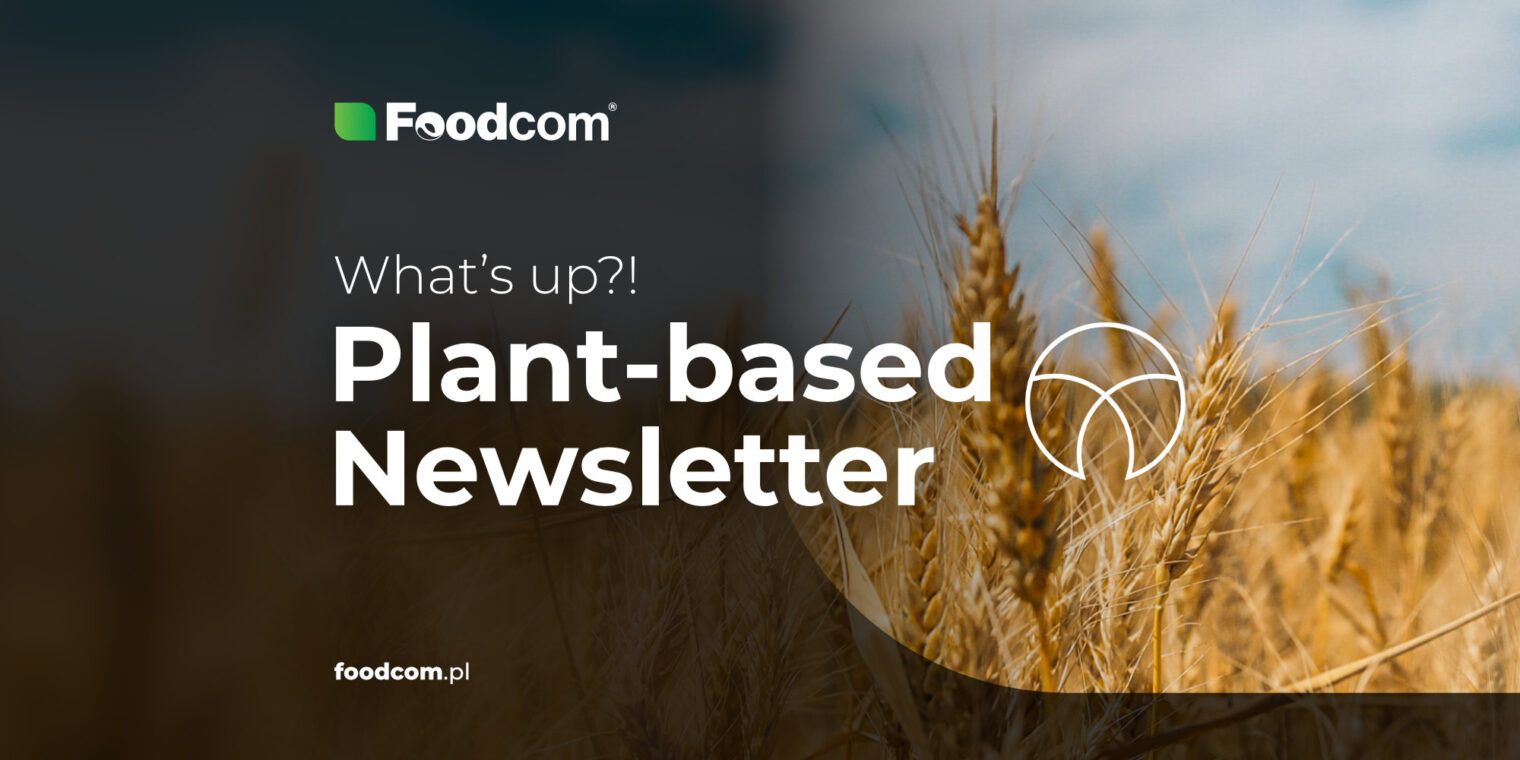As always, when it comes to plant-based products, everything depends on nature. On one hand, there is the soil that gives us the harvest, and on the other hand, there is mankind, who is responsible for processing and demand. If we are on this subject already, we can say that the release of our plant-based newsletter is almost like a two-week natural cycle… isn’t it?
In terms of products, we note that all proteins are in demand due to the general ongoing trend of vegan meat consumption, and there have also been significant changes in the Sugar trade in Europe. All this shows how important it is to keep a close eye on changes in the market.
We also have some new statistics from the United States showing that due to high inflation, estimated spending on a cookout on Independence Day has increased by 20% compared to 2022. With the European Holiday period approaching, will we see the same increase here? For news from other parts of the world, check out the What Else? section.
Native Starches
Recently, we have observed a good demand for Native Tapioca, Corn and Potato Starches. Customers seem to be less interested in buying Native Wheat Starch, which could be because the other starches are gluten-free. Starch prices have stabilized due to summer, which is typical for this time of year. After the vacations, we expect prices to increase. What also influences the demand for this product group is the gluten-free and vegan movement, which is still on.
Modified Starches
Since these also have use in the manufacture of gluten-free food products, we see a demand in countries that are focused on this kind. We see that the big players, especially the European producers are back in the game, fighting for market share to win back customers.
Proteins
There is interest in Corn Gluten Meal as it is more affordable for Aquafeed and Petfood customers. Demand for Vital Wheat Gluten, Pea Protein, and Soy Protein Isolate is improving, as evidenced by new contracts. More specifically, in the case of VWG – we are seeing what the market’s bottom line is. There are fewer volumes and higher prices. It might be the right time to buy.
Sweeteners
One of the most important news is that Ukraine has stopped exporting Sugar. This may be because the country is worried about not having enough product for its own domestic market. So, naturally, Europeans are looking for alternative sources of this commodity. As a result, the price is likely to rise until the next harvest. In the case of Dextrose the price dropped really strongly. Every buyer is checking that. People know that they can get a cheaper offer, so we can say that the interest is based on a good price.
Soy-based raw materials
Recently, the use of Soy Lecithin has increased. Demand for small quantities is being met by small and medium enterprises, as large manufacturers are already supplied for Q3. The demand for Soy Protein Isolate is due to, once again, the increasing interest in sports nutrition products and alternative vegan diets on the side of the end-users.
Europe
One-third of the tomatoes sold in the EU in Q1 came from Morocco.
We see a North African country climbing up the statistics quite valiantly. A new report shows that 31% of tomatoes sold in the EU in the first quarter of this year came from Morocco, while those originating from Spain accounted for only 25% of tomatoes sold in the EU in the same period. This is the first time in history that Morocco has sold more tomatoes to the EU than Spain in the first three months of the year.
EU seeks revised GMO rules to ease restrictions on genetically modified crops.
The European Commission has proposed to revise its rules on genetically modified organisms. The decision aims to ease some restrictions on crops produced using newer gene-editing technologies. The EU executive said farmers would gain access to climate- or pest-resistant crops that require less fertilizer or pesticides. On the other hand, consumers would be able to buy food with better nutritional value or lower allergen content.
Most Hungarian producers of cereals are expected to fail this year.
After the big price increase in 2022, the grain market saw a similar rapid drop in prices, which does not bode well for growers this year. This could be problematic as farmers already started the crop waiting to be harvested, even with the previous very high input costs. Right now, the price increase is low and waiting is not a clear choice due to limited storage capacity and financing costs for storage. The predictions are saying that most farmers will probably fail on rye grains as well.
The Americas
The production of Sugar in Brazil meets market expectations in early June.
Brazilian sugar production in the central and southern regions was roughly in line with market expectations in the first half of June, latest data shows. Rains, which had led to a jump in yields, are now hampering crush operations. Sugar production totaled 2.55 million tons in this period, 18.7% more than in the previous year.
Soybean acres could overtake corn in the United States.
Area planted for soybeans in the U.S. could surpass the current leader, and corn is to meet soybean oil demand for renewable diesel. In connection with that, gradual expansion of crushing plants will drive a need for an additional 600 million bushels within a few years. Ongoing growth in domestic grain and oilseeds demand will support prices while the U.S. share of the global export market continues to decline, according to the newest report.
Canadian wheat plantings reach new highs.
Wheat acreage in Canada has risen to its highest level in more than two decades. It’s one of several crops to see an increase in 2023, according to Statistics Canada’s June 2023 Field Crop Survey. In addition to wheat, other crops with notable increases in plantings in 2023 included rapeseed, barley, corn for grain, and soybeans. Less acreage was planted to oats, lentils and dry peas. The rise in wheat may be due to favorable prices and strong global demand.
Asia & Oceania
The food ministry in South Korea urges companies to cut wheat flour prices to fight high inflation.
In an effort to combat high inflation, the South Korean government has urged major food manufacturers to lower the price of wheat flour, the basic ingredient in many food products. Flour producers said they would review the possibility of lowering the price of flour and other flour-based products. The country imports about 99 percent of its Wheat, mainly from Australia (1.18 million tons), the United States (1.14 tons) and Canada (246 190 tons). This plant for livestock feed worth $583.6 million was imported from India (42 percent) and Australia (37 percent). The self-sustainability rate for Wheat in South Korea is about 1.1 percent.
The import duty on Wheat in India may be reduced.
The tariff on wheat imports to India may be lowered by a decision of the country’s government. This is aimed at reducing pressure on price increases and fighting inflation. At the same time, the country intends to start selling wheat and rice on the open market from July 5, offering 400 thousand tons of wheat and 500 thousand tons of rice in the first electronic auction. India is the second largest wheat producer after China. The country produces more than 100 million tons of grain annually, but supplies most of it to the domestic market.
El Niño returns. It could conjure up a new economic storm.
Just when you thought you could hope for a peak in interest rates soon, more bad news arrives. It looks like the El Niño weather phenomenon has returned. Its occurrence usually causes or exacerbates flooding, heat waves, water shortages and wildfires, especially in the Southern Hemisphere. The resulting damage to crops and infrastructure has an inflationary effect, putting pressure on central banks to tighten monetary policy. If climate change makes such events stronger and become more frequent, supply shocks will become more entrenched.


![Analiza rynku skrobi ziemniaczanej 2025 [Global Report] Analiza rynku skrobi ziemniaczanej 2025 [Global Report]](https://foodcom.pl/wp-content/uploads/2024/09/potato-starch-300x150.png)




